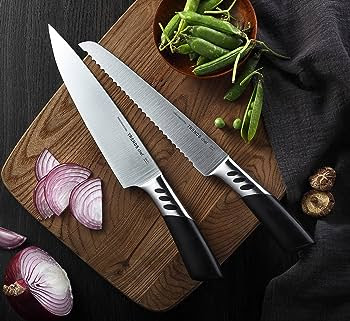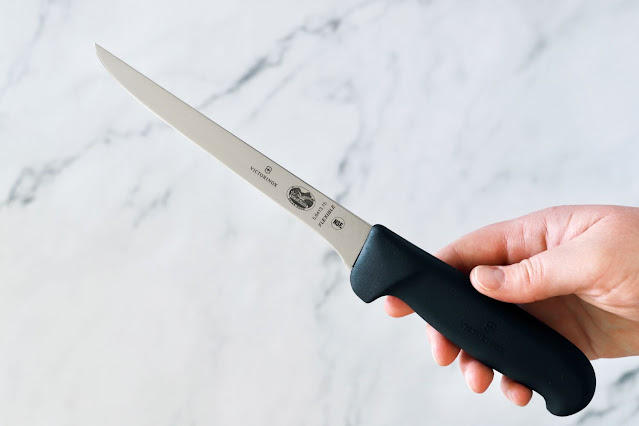The Essential Guide to Kitchen Knives: Your Culinary Sidekick
In the realm of cooking, the kitchen knife is your trusty companion, an extension of your culinary skills. A good set of kitchen knives is an investment that can transform your cooking experience from mundane to exceptional. In this comprehensive guide, we'll explore the world of kitchen knives, their various types, uses, maintenance, and how to choose the perfect ones for your cooking needs.
The Anatomy of a Kitchen Knife:
Before we dive into the types of kitchen knives, it's important to understand the basic parts of a knife:
Blade: The sharp cutting edge of the knife.
Spine: The top, non-cutting edge of the blade.
Point: The tip of the blade.
Edge: The cutting surface of the blade.
Tang: The part of the blade that extends into the handle.
Bolster: The thick metal portion between the blade and the handle, providing balance.
Handle: The part you grip while using the knife.
Types of Kitchen Knives:
Chef's Knife: The workhorse of the kitchen, the chef's knife has a broad, triangular blade that's perfect for chopping, slicing, and dicing. It's a versatile knife suitable for most tasks.
Paring Knife: This small knife with a pointed blade is ideal for delicate tasks like peeling, trimming, and precise cutting. It's great for working with small fruits and vegetables.
Utility Knife: Slightly smaller than a chef's knife, the utility knife is excellent for tasks that don't require a large blade. It's versatile and perfect for slicing sandwiches, small fruits, and more.
Santoku Knife: Originating from Japan, the Santoku knife features a shorter, wider blade with scalloped sides. It's excellent for slicing, dicing, and chopping vegetables and boneless meats.
Bread Knife: With a serrated edge, the bread knife easily cuts through crusty bread without crushing it. It's also useful for slicing soft fruits like tomatoes.
Carving Knife: A long, slender blade makes the carving knife ideal for slicing cooked meats like roasts, poultry, and hams with precision and minimal tearing.
Choosing the Right Kitchen Knives:
Quality Matters: Invest in high-quality knives made from stainless steel or carbon steel. They maintain their sharpness and durability.
Comfortable Handle: Choose knives with comfortable, ergonomic handles that fit your hand well. A secure grip is crucial for safety and control.
Blade Maintenance: Regular honing and sharpening are essential to keep your knives in top condition. Invest in a quality honing rod and consider professional sharpening when needed.
Storage Solutions: Use a knife block, magnetic strip, or blade guards to store your knives safely and prevent damage.
Knife Sets vs. Individual Knives: Consider your cooking style. A well-chosen set can cover most needs, but individual knives may be preferable if you have specific requirements.
Conclusion:
A set of quality kitchen knives is an investment that can greatly enhance your culinary endeavors. By understanding the types of knives available, choosing the right ones for your cooking style, and maintaining them properly, you'll have essential tools that can turn any kitchen task into a pleasure. So, equip your kitchen with the right knives, and let them be your trusty companions in creating delicious and beautiful dishes.

.jpg)


Comments
Post a Comment